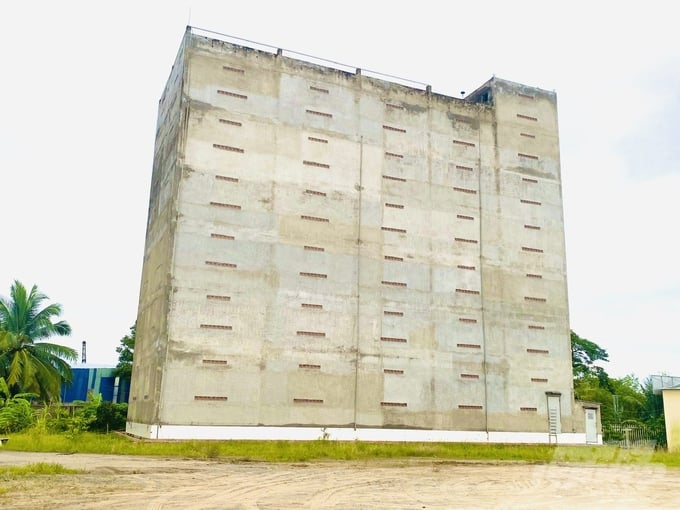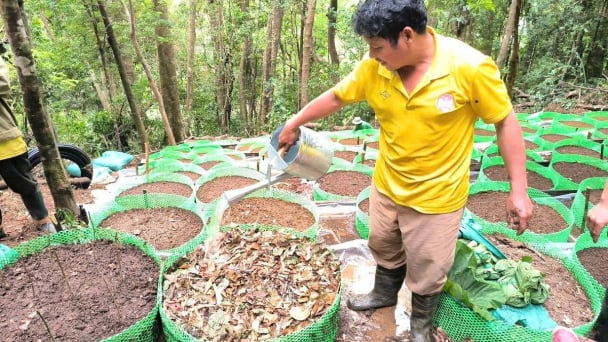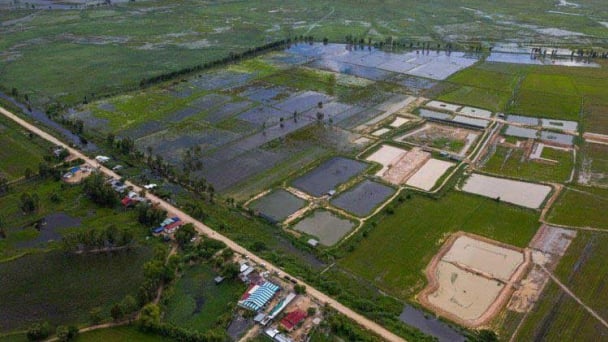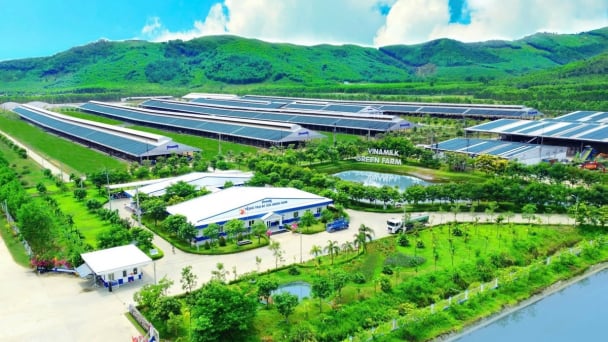May 16, 2025 | 10:46 GMT +7
May 16, 2025 | 10:46 GMT +7
Hotline: 0913.378.918
May 16, 2025 | 10:46 GMT +7
Hotline: 0913.378.918

Bird's nest farming mainly develops strongly in the Mekong Delta region. Photo: Le Hoang Vu.
According to data from the Ministry of Agriculture and Rural Development, Vietnam exports more than 100 tons of bird's nest annually, generating between 200 and 300 million USD in foreign exchange. Currently, a number of municipalities have implemented swiftlet agricultural area planning, particularly in the swiftly expanding Mekong Delta. In addition, some businesses have developed software to administer bird's nest proprietors, link production in chains, and trace the origin of bird's nests exported to China.
Kien Giang and An Giang are two regions that aggressively cultivate bird's nests for export. Kien Giang has nearly 3,000 bird-rearing residences and is considered the country's leader in this industry. In 2022, Kien Giang will produce nearly 18 tons of bird's nests, generating hundreds of billions of dong. In just the first nine months of 2023, Kien Giang produced nearly 15 tons of bird's nests.
According to the Kien Giang Department of Animal Husbandry and Veterinary Medicine, the selling price of raw bird's nest is between 16 and 17 million VND/kg, semi-processed bird's nest is between 24 and 25 million VND/kg, and premium bird's nest is between 30 and 35 million VND/kg. Each bird's nest house earns an average of several tens of millions to hundreds of millions of dong per month. This is a relatively high level of income in rural areas.
However, bird's nest cultivation has become predominantly impromptu in recent years. The production, refining, and ingestion of bird's nest products have not yet established a closed value-adding chain. Numerous agricultural facilities have not registered to receive codes, thereby failing to meet traceability requirements. In addition, the enormous development of bird's nest houses causes an imbalance relative to the total population, resulting in an ineffective number of bird's nest houses with fewer bird's nests.

The raising, processing, and consumption of bird's nest products have not yet formed a closed chain to increase value. Photo: Le Hoang Vu.
An Giang has over a thousand extant bird's nest farms, the local annual bird's nest output is approximately 10 tons, and the annual revenue exceeds 180 billion VND. There are many mountains, forests, and orchards in An Giang, so the climate is very conducive to avian nesting. Consequently, An Giang is the second greatest producer of bird's nests in the Mekong Delta region, after Kien Giang.
According to Mr. Truong Kien Tho, Deputy Director of the An Giang Department of Agriculture and Rural Development, bird nest cultivation in An Giang has much space for growth. In order for this industry to develop in a safe and disease-free manner, the province of An Giang has made a decision regarding the administration of bird nest cultivation in the region. The locality will promote and invite competent investors to construct processing facilities, coordinate purchasing, and promote the export of bird's nests in the near future, based on the planning of the agricultural area.
According to Mr. Hong Dinh Khoa, Chairman of the Board and General Director of Vietnam Quoc Yen Joint Stock Company, Vietnam has signed a protocol with China on the official export of bird's nests, thereby opening the market for consumption. The greatest bird's nest in the globe.
Mr. Tien Ngoc Tien, Director of the Department of Animal Health Region VII (Department of Animal Health), stated that the Mekong Delta region is ideal for developing agriculture, including bird's nest farming, due to its soil, year-round warmth, and lack of cyclones.

With the selling price of raw bird's nest from 16 - 17 million VND/kg, semi-processed bird's nest from 24 - 25 million VND/kg, premium bird's nest from 30 - 35 million VND/kg, the average income of each bird's nest house is from several dozens to hundreds of millions of dongs/month. Photo: Le Hoang Vu.
Numerous years of monitoring the epidemiology of this livestock have revealed no anomalies. Additionally, the proprietors of the agricultural facilities comply with hygiene and disinfection regulations. This is a profession that does not require the purchase of breeds or daily sustenance, but the profits are quite high and should be encouraged to grow.
According to Mr. Tien, three conditions must be met for the development of sustainable bird's nest farming: Organize the production and management of bird's nest in accordance with the value chain, affix identification codes and implement traceability, and assure disease safety and food safety for bird's nest farms and bird's nest products. To increase the value of bird's nests, it is also necessary to establish a national brand for bird's nest products, with a commitment to quality assurance from producers and export processing businesses.
Translated by Linh Linh

(VAN) Vietnam’s TH Group officially put its high-tech fresh milk processing plant into operation in the Russian Federation, marking a historic moment as the first TH true MILK cartons were produced in Russia.

(VAN) Use of high-quality broodstock and biotechnology is regarded as the most effective approach to ensuring sustainable and economically viable shrimp aquaculture ahead of climate change and the emergence of increasingly intricate disease patterns.

(VAN) Carbon farming is a form of agricultural practices that helps absorb more greenhouse gases than it emits, through smart management of soil, crops, and livestock.

(VAN) This is a key content of the Memorandum of Understanding recently signed between the Vietnam Fisheries Society and Kunihiro Inc of Japan.

(VAN) To achieve the goal, local authorities and businesses in Kon Tum province have fully prepared the necessary conditions for the new Ngoc Linh ginseng planting season.

(VAN) Jiangsu province is gearing up to host training programs in Phnom Penh, the capital of Cambodia, this year to establish the Fish and Rice Corridor.

(VAN) Le Hoang Minh, representing Vinamilk, shared the company's experience in energy saving and green energy transition for production at a workshop held during the P4G Summit.